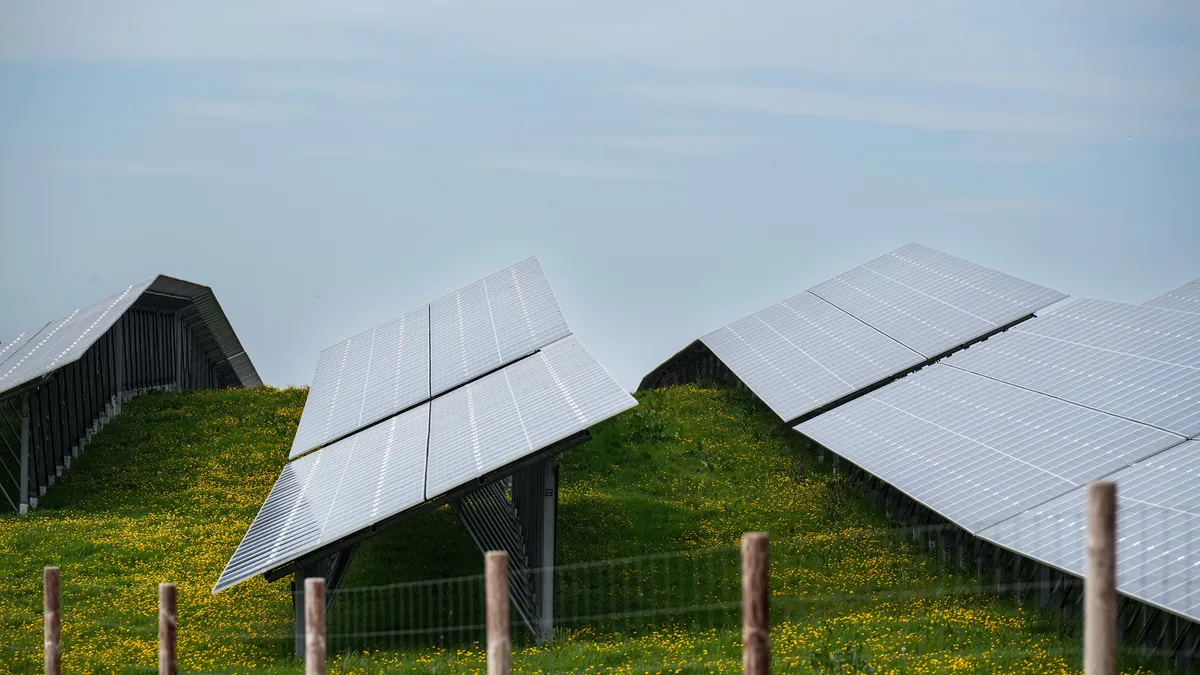Dive Brief:
- Utility-scale renewable energy developers generally avoid substantive engagement with host communities until securing site control, and prefer that locals avoid recommending or making decisions that could affect projects, according to an Aug. 9 study by Lawrence Berkeley National Laboratory.
- In the first academic survey of utility-scale renewables developers’ attitudes and practices around community engagement, 123 respondents employed by companies responsible for about half of recent U.S. wind and solar deployments cited community opposition and strict local siting ordinances as leading causes of project delays and cancellations.
- Respondents generally perceived community engagement to be worthwhile for developers and beneficial for communities, LBNL found. But developers can do more to engage a broader set of local stakeholders, not just private landowners directly affected by development, said Robi Nilson — a study author and postdoctoral fellow at the Energy Markets and Policy Department at Lawrence Berkeley National Laboratory — on an Aug. 29 webinar presenting the study’s findings.
Dive Insight:
Based in part on expectations that thorough community engagement processes draw out development timelines, 67% of wind and 78% of solar developers prefer a “decide-announce-defend” approach, where developer representatives inform the general public of their plans only after securing control of enough land to move the project forward, the study found.
Survey responses indicated about half of wind and solar projects experience significant delays, with 20% taking longer than six years, and at least 30% are canceled, Nilson said on the webinar. Solar projects are more likely to be delayed or canceled, the survey found.
Waiting until site control is established to announce projects “indicates that often the public is unaware, and thus not engaged in project development until a critical component of project design — the location of the proposed project footprint — has already been selected,” the study authors wrote.
Most developers are not averse to some level of community engagement, the study found. On a five-step scale from “most of the public need not be aware” to “the public should make decisions,” most respondents said the most appropriate approach to community engagement was to solicit input from local stakeholders. But no respondents said the public should make decisions about the project, and only 6% of solar and 8% of wind developers said the public should recommend decisions.
Public engagement seems to increase projects’ chances of getting built. The public was “completely unaware of the project proposal” in 22% of respondents’ most recent canceled project, LBNL found.
Asked to describe the level of community involvement in their most recent successful project, 18% of respondents said the public recommended decisions, “indicating that…public recommendations may not be as detrimental to project success as many developers may assume,” the study authors wrote.
Despite the apparent benefits, developers spend less than 0.1% of typical project capital expenditures on community engagement, according to spending shared by a limited number of respondents. Reported community engagement expenditures were less than one-third of expenditures on site control activities, LBNL said.
The gap highlights the contrast between private and public participation in utility-scale renewables development and “[speaks] to the additional opportunities afforded to private landowners…or equity holders [who have] more intimate and more direct influence over decisions than the general public,” Nilson said on the webinar.
Additionally, developers’ prevailing approach to community engagement is focused on the developers’ desired outcome — getting the project built — rather than “doing it because it’s the right thing to do,” Nilson said.
Most developers reported making presentations to local governments and conducting in-person meetings with local stakeholders. Those activities were significantly more common than virtual information-sharing opportunities like maintaining a project website, which about 60% of solar and wind developers did, or social media presence, which fewer than half did, LBNL found.
Solar and wind projects saw similar frequencies of specific engagement activities, with one exception: Fewer than 25% of solar projects kept a local office, while more than 50% of wind projects did.
State-led siting processes are more expensive for developers and less beneficial for host communities than local processes, but generate less local opposition and offer greater chances of approval for large projects, survey respondents said. Three-fourths of solar developers and 78% of wind developers said state-led siting processes are more likely to result in approval of facilities larger than 100 MW, while 87% of solar developers and 86% of wind developers said state processes are more predictable.
LBNL’s recommendations for mitigating local opposition included leveraging federal clean-energy tax credits to incentivize shared decision-making or profit-sharing arrangements with host communities; accommodating community desires for shared project ownership, which developers have been wary of in the past; and offering more robust and expansive community benefit agreements.
Values for recent community benefits agreements range from $2,800/MW per year to $7,600/MW per year for solar projects and $2,300/MW per year to $5,900/MW per year for wind projects, according to expenditures reported by a limited number of survey respondents.













